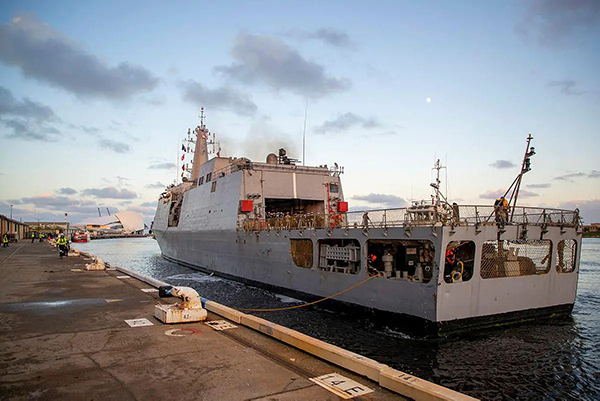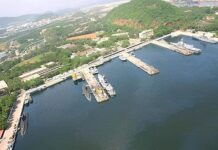In a big push for self-reliance in the defence manufacturing sector, the defence ministry, on 30 March, signed a raft of contracts for indigenous military hardware worth ₹32,100 crore including warships, supersonic missiles for the navy, and surface-to-air missiles and weapon locating radars for the army, the latest in a series of deals concluded in March ahead of the financial year-end, officials familiar with the matter said.
The defence ministry signed three contracts worth ₹19,600 crore with domestic shipyards for 11 next-generation offshore patrol vessels and six next-generation missile vessels, and another one worth ₹1,700 crore with Bharat Electronics Limited (BEL) for a fire control system to boost the navy’s capabilities.
It also signed a ₹8,160-crore contract with Bharat Dynamics Limited (BDL) for improved Akash surface-to-air missiles for the army, and another one worth ₹990 crore with BEL for Swathi weapon locating radars, also for the army.
The sixth contract of the day was signed with BrahMos Aerospace for next-generation maritime mobile coastal batteries (long range) and BrahMos missiles for ₹1,700 crore.
The offshore patrol vessels are being bought from Goa Shipyard Ltd (GSL) and Garden Reach Shipbuilders and Engineers (GRSE), Kolkata, for ₹9,781 crore, while the missile vessels will be supplied by Cochin Shipyard Limited (CSL) for ₹9,805 crore.
The latest deals come a day after the ministry signed three contracts worth ₹5,400 crore for an advanced communication satellite, GSAT 7B, for the army, an automated air defence control and reporting system for the army’s air defence units, and Sarang electronic support measure systems for navy helicopters.
The ministry has signed contracts worth almost ₹52,000 crore (including the deals signed on Thursday) in the last four weeks for indigenous military hardware, including basic trainer aircraft, cadet training ships, medium-power radars, radar warning receivers and Dornier aircraft.
“Of the 11 offshore patrol vessels, seven will be indigenously designed, developed and manufactured by GSL and four by GRSE. The delivery of the ships is scheduled to commence from September 2026…and the missile vessels from March 2027,” the ministry said in a statement.
It elaborated on the capabilities the platforms ships will bring to the navy.
The offshore patrol vessels will enable the navy to maintain its combat capability and meet various operational requirements including anti-piracy, counter-infiltration, anti-poaching, anti-trafficking, non-combatant evacuation operations, and search and rescue.
The construction of these ships will generate an employment of 110 lakh man-days over seven-and-a-half years, the ministry said.
The heavily-armed missile vessels will come with stealth, high speed and offensive capability, and their primary role will be to provide offensive capability against enemy warships and land targets.
“These ships will be capable of conducting maritime strike operations, anti-surface warfare operations and would be a potent instrument of sea denial for enemy ships especially at choke points,” the ministry said. The construction of these ships will generate an employment of 45 lakh man-days over nine years.
The contract with BDL for improved Akash weapon system (AWS) is for the army’s Army Air Defence’s third and fourth regiments. “In order to meet aerial threats, two additional regiments of AWS with upgradation are being procured for Indian Army for the northern borders (with China),” the ministry said in another statement.
“The project will give a boost to the Indian missile manufacturing industry in particular and the indigenous defence manufacturing ecosystem as a whole. It has an overall indigenous content of 82% which will be increased to 93% by 2026-27.”
On the weapon locating radars, the ministry said the system is capable of locating hostile guns, mortars and rockets, and facilitating their destruction through counter bombardment. “This will enable troops to carry out their operational tasks without any interference from the enemy and also provide them safety against enemy fire. Induction is planned to be completed in 24 months.”
The Lynx-U2 system fire control system ordered for the navy is capable of accurately tracking and engaging targets amid sea clutter as well as air/surface targets, the ministry said in a separate statement.
It will be installed on offshore patrol vessels to be built at GRSE, and GSL. This latest order for BEL will generate an employment of 200,000 man-days over the next four years, the statement added.


















